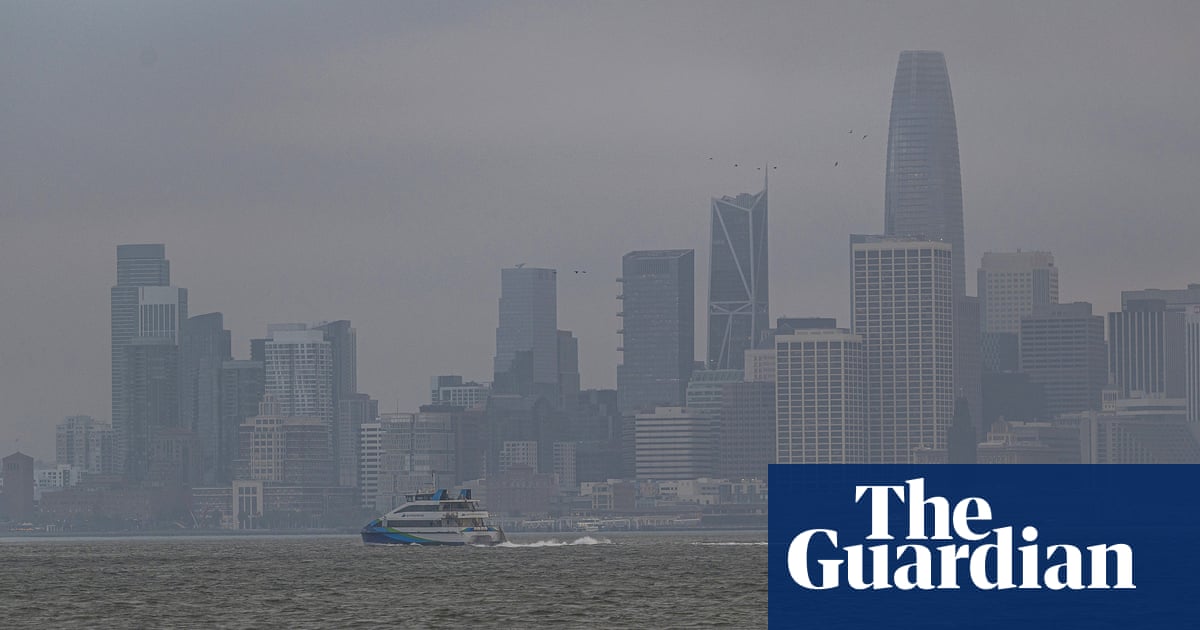More than one-third of people in the US exposed to harmful air pollution – report
More than one-third of people in the US exposed to harmful air pollution – report The Guardian US


Report: Air Pollution in the US

Introduction
A new report has revealed that nearly four in 10 people in the US are exposed to unhealthy levels of air pollution. The rise in hazardous air quality is driven by wildfires, drought, and extreme heat, with four of the five most polluted cities located in California.
Sustainable Development Goals (SDGs)
- Goal 3: Good Health and Well-being
- Goal 13: Climate Action
Findings
According to the American Lung Association’s annual State of the Air report, more than 131 million people in the US are exposed to harmful ozone and particle (PM 2.5) pollution. This represents an increase of 11.7 million from the previous year.
Exposure to these pollutants can raise the risk of lung and heart disease, asthma attacks, and reproductive ailments.
Impact on Health
“Climate change is not remote, it’s not an abstraction. It is a reality impacting the health of millions of people from coast to coast every year,” said Paul Billings, senior vice-president for advocacy at the American Lung Association.
Progress and Setbacks
Since the passing of the Clean Air Act in 1970, the combined emissions of six widespread air pollutants, including PM 2.5, have dropped by 78% according to the EPA. However, pollution from wildfire smoke has reversed these improvements in recent years.
In the 25 most polluted cities, the average number of days that residents were exposed to unhealthy levels of particle pollution increased by two, reaching an average of nearly 21 days. This increase signals the magnitude of wildfires and their impact on public health.
Most Polluted Areas
- California
- Arizona
- Colorado
- Nevada
- New Mexico
- Texas
Bakersfield, California, has the highest year-round particle pollution, while Los Angeles has the worst ozone pollution.
Environmental Justice
People of color are more than twice as likely to live in counties with failing air quality due to historical zoning practices that placed industrial plants, shipping ports, and major highways in marginalized neighborhoods.
Recommendations
Last month, the Biden administration announced new standards to reduce tailpipe emissions from diesel-powered trucks and cars. Advocates also call for updated ozone standards.
“This is the one thing we cannot control as individuals,” said Afif El-Hasan, a pediatrician and member of the American Lung Association. “What’s out there is what we have to breathe. And we need a concerted effort to make sure that air is healthy.”
SDGs, Targets, and Indicators
| SDGs | Targets | Indicators |
|---|---|---|
| SDG 3: Good Health and Well-being | 3.9 By 2030, substantially reduce the number of deaths and illnesses from hazardous chemicals and air, water, and soil pollution and contamination. | – Number of deaths and illnesses attributed to air pollution – Number of people exposed to unhealthy levels of air pollution |
| SDG 11: Sustainable Cities and Communities | 11.6 By 2030, reduce the adverse per capita environmental impact of cities, including by paying special attention to air quality and municipal and other waste management. | – Air quality index in cities – Number of days residents are exposed to unhealthy levels of particle pollution |
| SDG 13: Climate Action | 13.1 Strengthen resilience and adaptive capacity to climate-related hazards and natural disasters in all countries. | – Impact of climate change on air quality – Increase in pollution from wildfire smoke |
| SDG 16: Peace, Justice, and Strong Institutions | 16.7 Ensure responsive, inclusive, participatory, and representative decision-making at all levels. | – Addressing the legacy of racist zoning practices that contribute to unequal air quality |
1. Which SDGs are addressed or connected to the issues highlighted in the article?
SDG 3: Good Health and Well-being
The article discusses the health risks associated with exposure to air pollution, including lung and heart diseases, asthma attacks, and reproductive ailments. SDG 3 aims to ensure healthy lives and promote well-being for all at all ages.
SDG 11: Sustainable Cities and Communities
The article highlights the impact of air pollution on cities, particularly in California, where wildfires and extreme heat contribute to hazardous air quality. SDG 11 focuses on creating sustainable cities and communities, including paying attention to air quality.
SDG 13: Climate Action
The article mentions the role of climate change in worsening air quality, particularly due to pollution from wildfire smoke. SDG 13 aims to take urgent action to combat climate change and its impacts.
SDG 16: Peace, Justice, and Strong Institutions
The article discusses how historical racist zoning practices have led to people of color being more likely to live in areas with poor air quality. SDG 16 emphasizes the importance of inclusive and representative decision-making at all levels.
2. What specific targets under those SDGs can be identified based on the article’s content?
– Target 3.9: By 2030, substantially reduce the number of deaths and illnesses from hazardous chemicals and air, water, and soil pollution and contamination.
– Target 11.6: By 2030, reduce the adverse per capita environmental impact of cities, including by paying special attention to air quality and municipal and other waste management.
– Target 13.1: Strengthen resilience and adaptive capacity to climate-related hazards and natural disasters in all countries.
– Target 16.7: Ensure responsive, inclusive, participatory, and representative decision-making at all levels.
3. Are there any indicators mentioned or implied in the article that can be used to measure progress towards the identified targets?
– Number of deaths and illnesses attributed to air pollution
– Number of people exposed to unhealthy levels of air pollution
– Air quality index in cities
– Number of days residents are exposed to unhealthy levels of particle pollution
– Impact of climate change on air quality
– Increase in pollution from wildfire smoke
– Addressing the legacy of racist zoning practices that contribute to unequal air quality
These indicators can be used to measure progress towards the identified targets by tracking changes in air pollution-related health outcomes, monitoring air quality levels in cities, assessing the frequency and duration of unhealthy particle pollution exposure, evaluating the impact of climate change on air quality, and addressing systemic issues related to zoning practices.
4. Table: SDGs, Targets, and Indicators
| SDGs | Targets | Indicators |
|---|---|---|
| SDG 3: Good Health and Well-being | 3.9 By 2030, substantially reduce the number of deaths and illnesses from hazardous chemicals and air, water, and soil pollution and contamination. | – Number of deaths and illnesses attributed to air pollution – Number of people exposed to unhealthy levels of air pollution |
| SDG 11: Sustainable Cities and Communities | 11.6 By 2030, reduce the adverse per capita environmental impact of cities, including by paying special attention to air quality and municipal and other waste management. | – Air quality index in cities – Number of days residents are exposed to unhealthy levels of particle pollution |
| SDG 13: Climate Action | 13.1 Strengthen resilience and adaptive capacity to climate-related hazards and natural disasters in all countries. | – Impact of climate change on air quality – Increase in pollution from wildfire smoke |
| SDG 16: Peace, Justice, and Strong Institutions | 16.7 Ensure responsive, inclusive, participatory, and representative decision-making at all levels. | – Addressing the legacy of racist zoning practices that contribute to unequal air quality |
Behold! This splendid article springs forth from the wellspring of knowledge, shaped by a wondrous proprietary AI technology that delved into a vast ocean of data, illuminating the path towards the Sustainable Development Goals. Remember that all rights are reserved by SDG Investors LLC, empowering us to champion progress together.
Source: theguardian.com

Join us, as fellow seekers of change, on a transformative journey at https://sdgtalks.ai/welcome, where you can become a member and actively contribute to shaping a brighter future.







